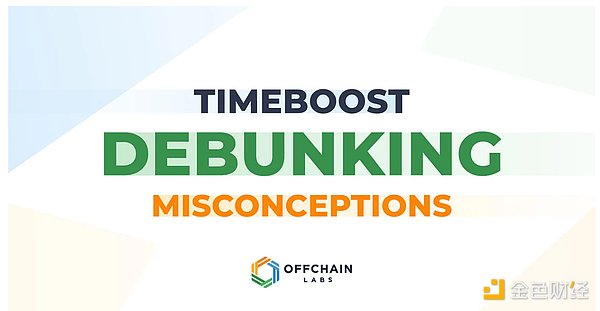Myth 1: Arbitrum uses the same transaction ordering and block building model as Ethereum L1, so the L1 MEV problem automatically applies to Arbitrum.
Reality: Arbitrum's ordering method is very different from Ethereum L1. Arbitrum uses a first-come, first-served (FCFS) model to determine transaction ordering, which means that transactions are ordered in the order they arrive. Arbitrum ordering also happens serially, rather than all at once with each block. This misunderstanding of Arbitrum transaction ordering leads to other misunderstandings about how Timeboost works.
Myth 2: Timeboost creates a new type of MEV extraction.
Reality: Timeboost does not create a new type of Maximum Extractable Value (MEV). Instead, it makes subtle tweaks to when and how MEV works in its existing form. Timeboost aims to strike a balance between capturing MEV value for the chain and not introducing additional externalities.
For example, Timeboost does not enable transaction reordering in a way that would facilitate a sandwich attack. The protocol does allow users to try to get their transactions processed earlier by gaining control of a fast channel, but it does not allow users to manipulate the order in which transactions occur relative to other transactions in the same block. This means that a fast channel controller cannot determine how their transaction is ordered relative to other transactions [at any given time].
Myth 3: Timeboost gives auction winners unfair power over transaction ordering.
The reality is: winning a Timeboost auction gives you a timing advantage — specifically, the proposed 200 millisecond “head start” — but it does not ensure that your transaction is always first in every block. The perceived value of a fast lane is predetermined by its holders and how much they choose to bid to win control: It’s a use it or lose it privilege. Let’s be clear about what Timeboost does not do:
It does not grant anyone the right to reorder transactions. It does not allow you to see other people’s transactions ahead of you (because the mempool will remain private).
It does not ensure that your transaction is always first in every block.
This does not mean that your transactions will have absolutely no total time delay. Winning the bid means that you will not experience the 200ms artificial delay that others face, but natural delays (such as processing time or network distance) still apply.
Myth 4: Timeboost will definitely be monopolized by powerful centralized entities, ultimately harming the Arbitrum ecosystem.
Reality: Timeboost is designed as an auction-based system that encourages open competition. Although the idea of monopoly may be scary, the auction process is still competitive. If one player dominates, they will be required to constantly outbid other users, preventing complete static control. Additionally, fast lanes only provide a 200ms time advantage. The system is designed to incentivize rational actors to participate when they believe there is an advantage in controlling a fast lane, and only bid to the value they are willing to pay for that advantage (because this is a sealed bid auction).
Finally, we want to emphasize that Timeboost is completely optional, meaning that the Arbitrum chain can function normally even without it. If Timeboost needs to be disabled, the network will smoothly revert to FCFS transaction ordering, maintaining its current security and efficiency. Each chain can decide for itself whether to enable Timeboost - your chain, your rules.
Myth #5: The goal of Timeboost is to capture all MEV value and eliminate spam completely.
Reality: As stated in the AIP, the goal of Timeboost is to provide chain owners with a way to capture a large share of the MEV on their chain and reduce spam from FCFS arbitrage, while maintaining a best-in-class user experience with fast block times and protection against harmful MEV.








